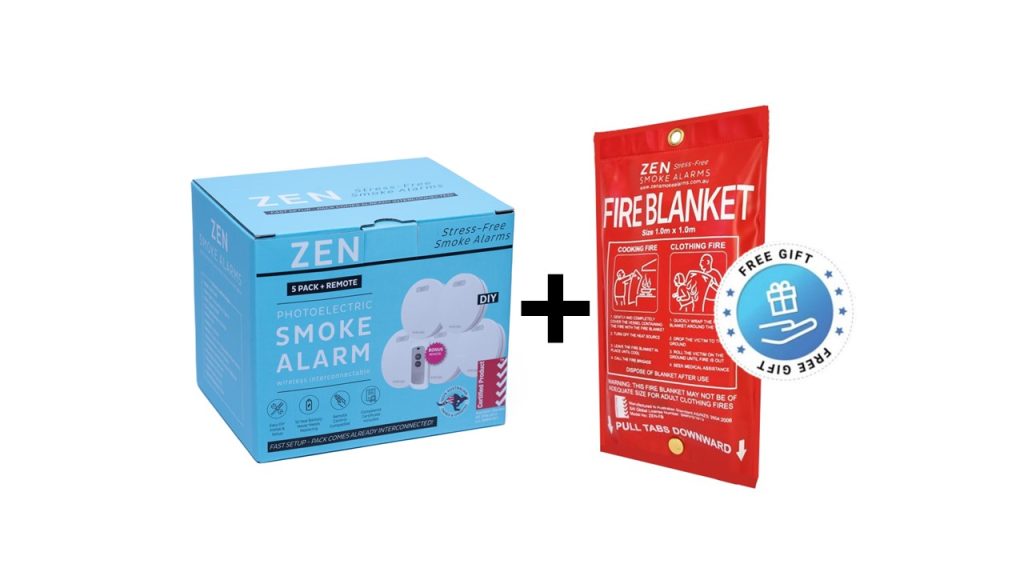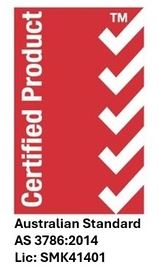As summer arrives, Queenslanders embrace outdoor barbecues, festive gatherings, and long, sunny days. However, the warmer months also bring increased risks of fires from cooking, electrical overloads, and bushfires. Ensuring your home is fire-ready starts with understanding the importance of interconnected smoke alarms.
Why Interconnected Smoke Alarms Are Essential
Interconnected smoke alarms such as ZEN are a must-have for every Queensland home. Unlike standalone alarms, interconnected systems link all your smoke alarms, so when one detects smoke, they all sound the alarm. This gives you and your family precious extra time to escape, especially in larger homes or properties with multiple levels.
In fact, Queensland’s smoke alarm legislation for 2027 requires ALL homes to have interconnected photoelectric smoke alarms. By upgrading now, you’re not only complying with the law but also safeguarding your loved ones.
Summer Fire Safety Tips
1 Test Your Interconnected Smoke Alarms
- Press the test button monthly to ensure all alarms activate.
- Vacuum around the alarms to remove dust that might affect their performance.
2 Upgrade to Photoelectric Alarms
- ZEN photoelectric smoke alarms are better at detecting smouldering fires, which are common in home environments.
- Pairing photoelectric technology with an interconnected system is the ultimate fire safety solution.
3 Have a Fire Escape Plan
- Practice evacuating your home and establish a safe meeting point outside.
- Keep a spare set of house keys in an easily accessible location to facilitate a speedy escape.
- Interconnected smoke alarms give you extra time to put your plan into action.
4 Be BBQ Safe
- Unattended cooking is a leading cause of house fires – never leave the grill unattended.
- Keep a fire blanket or extinguisher within easy reach.
- Position your barbecue away from combustible materials, such as curtains, plants, or outdoor furniture. A safe distance can help prevent fire accidents.
- Always turn off the gas or unplug the electric BBQ when you’re finished.
5 Prepare for QLD Bushfires
- Clear gutters, trim trees, and have an emergency plan ready if you live near bushfire-prone areas.
- Know your Fire Danger Rating (FDR) – an FDR describes the potential level of danger should a bushfire start.
- Ensure vehicles have sufficient fuel and move them to a safe location.
- Wet down the sides of buildings, decks and plants close to your home in the likely path of the bushfire.
ZEN Interconnected Smoke Alarms: Your Partner in Summer Safety
Protecting your home has never been easier with ZEN Smoke Alarms. Our interconnected smoke alarm bundle packs (5, 7, 10-pack bundles) include state-of-the-art interconnected photoelectric smoke alarms that meet Queensland’s 2027 requirements. Plus, every ZEN bundle pack comes with a bonus remote control for effortless testing and a free fire blanket for added home protection and peace of mind.

Make this summer a safe and enjoyable season by ensuring your home is equipped with interconnected smoke alarms. Upgrade today and enjoy the peace of mind that comes from knowing your family is protected. Stay safe, Queensland!

Want to know more? Watch our ZEN quick start video or call us on 0478 596 402 today
We love talking smoke alarms!
ZEN Photoelectric Smoke Alarms
New Farm, QLD, 4005







